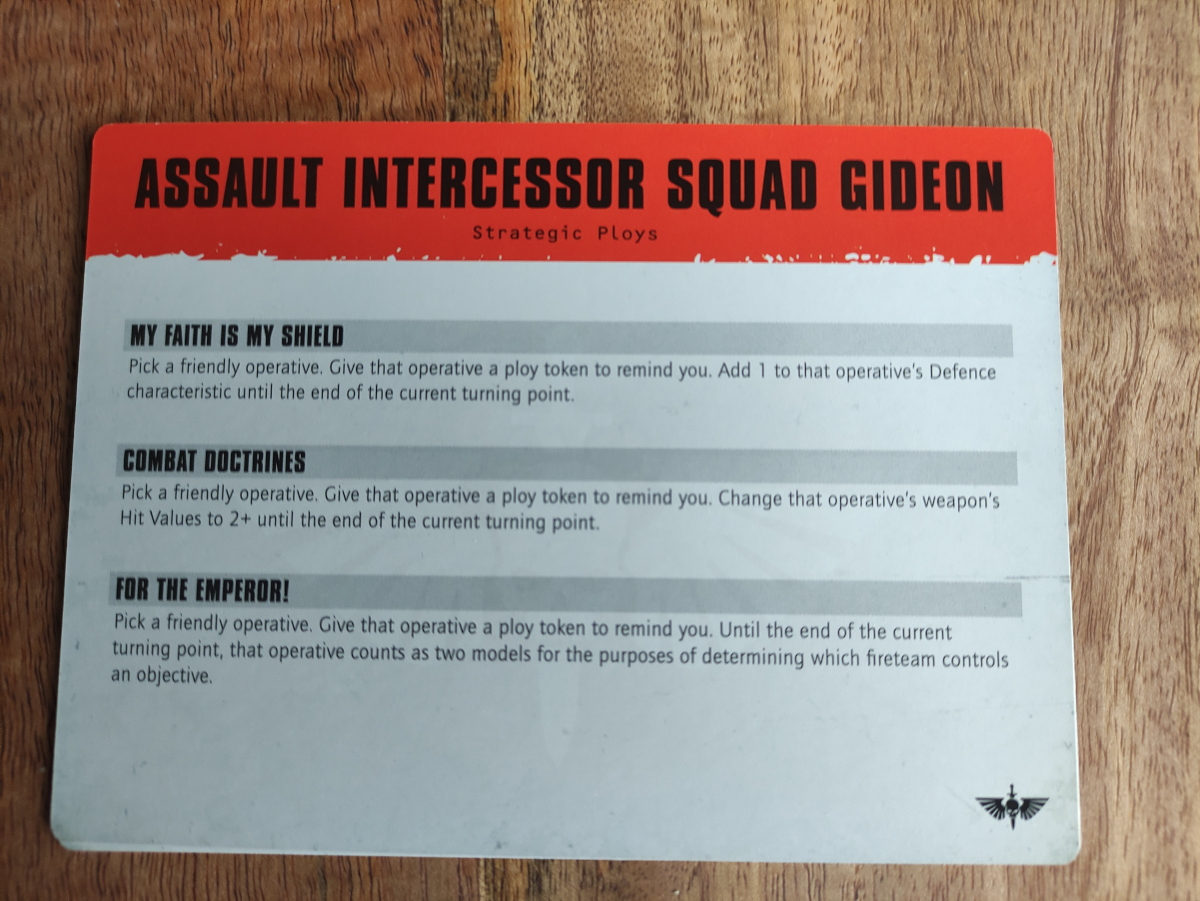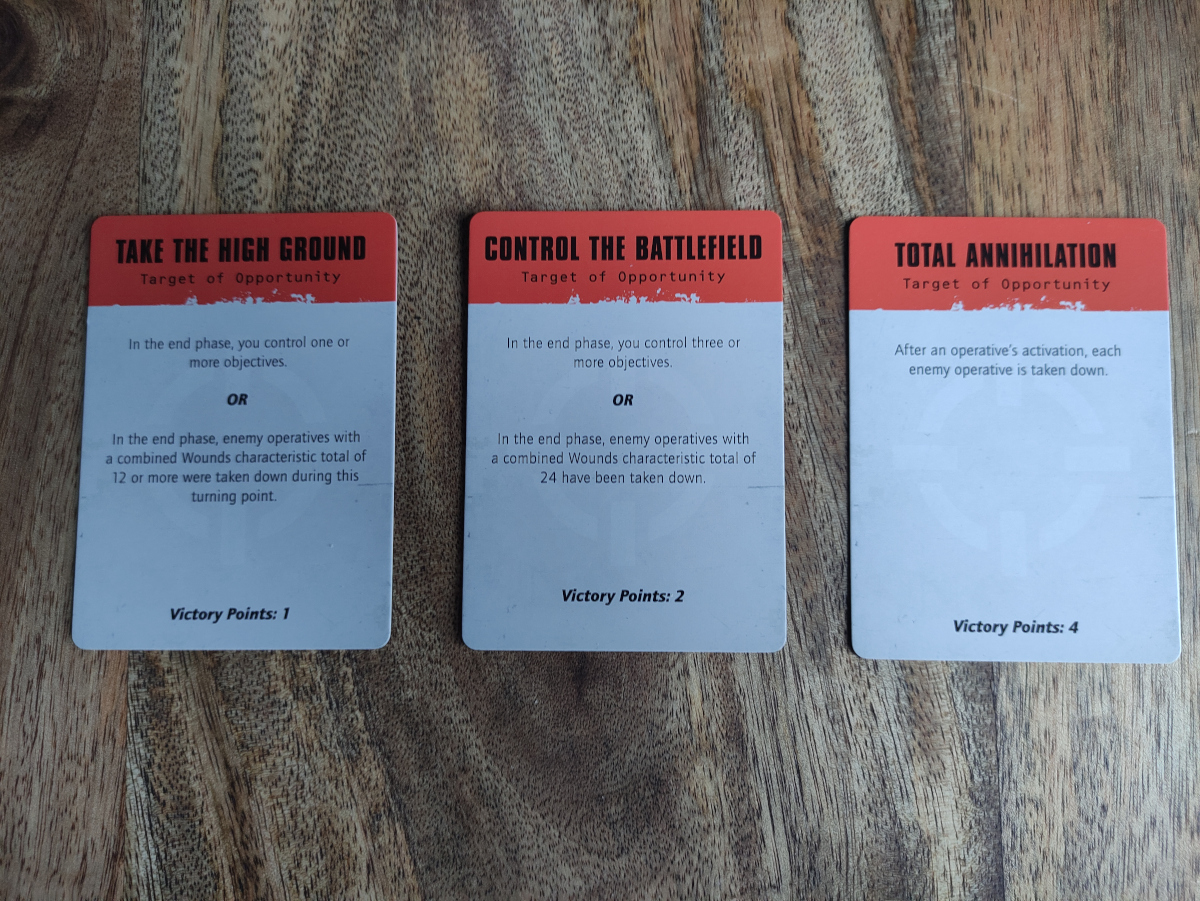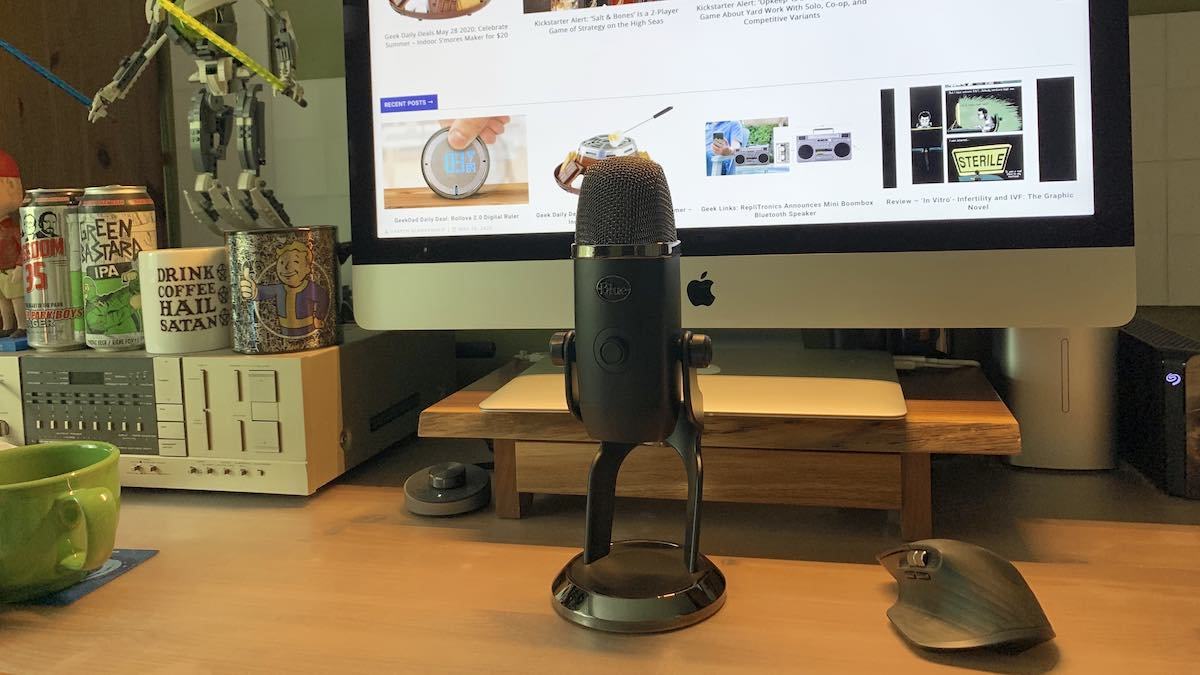In August, Games Workshop released Kill Team: Octarius. A new version of its skirmish game set in the Warhammer 40,000 universe. This month, (well actually last month now; I’m a slow typer) it is releasing 2 new small box games via Barnes and Noble, in the US and Game stores, in the UK. One of those games is Fire Team. This is a cut-down skirmish game, designed to introduce new and younger players to the world of the Games Workshop hobby. It’s a quick and accessible hex-based boardgame based on the new Kill Team ruleset, and it’s rather good.
So good, in fact, I am prepared to award it GeekDad Approved status.
What Is Fire Team?
Fire Team pits two forces together, the ever-present Space Marines against a horde of robot-skeletons, the Necrons. Games are for two players and last about an hour. Fire Team takes place on a hex-based board and dispenses with the free-form movement one expects from traditional wargames. The basic teams aren’t expandable, so follow-on purchases are not essential to get continued use out of your Fire Team box. You are provided with everything you need to reenact many games of Fire Team. The game is engaging enough to warrant many play-throughs.
The box does, however, contain data cards for several additional Warhammer 40,000 races. So if you do have some models for Orks, Tau, Imperial Guard, or Harlequins, you can play those in the game too. To further boost longevity, the rules come with a simple campaign system that allows you to carve out a narrative for your forces.
What’s in the Box?
All the models in the box are “easy to build” and so don’t require any glue to assemble. You will need some sprue clippers or a craft knife to separate the pieces from the sprue. The Space Marines are significantly easier to build than the Necrons; younger hands will definitely need some assistance.
One thing in the box worthy of special mention is the box insert. Not only are there spaces for all the cards and tokens, but there are also little slots in which to slide in the bases of your assembled miniatures. This holds them in place when you want to transport or store your box. It’s a small thing, but it’s a great step forward for GW and extremely pleasing.
In the box you’ll find:
- 18 Citadel Miniatures: 5 Space Marines and 13 for the Necron forces
- Double-sided game board. Each side depicts a different battlefield and has a hex grid overlay
- 20 Page rule book
- 14 Dice (D6s)
- 22 Datacards
- 6 Stratagem Cards
- 12 Mission Cards
- 12 Targets of Opportunity Cards
- 10 Special Issue Wargear Cards
- 18 Special Operation Cards
- 1 Turn Tracker Card
- 85 tokens
All of the contents are of excellent quality. The card stock used is good and the board is particularly nice.
How Do You Play Fire Team?
The game is comparatively simple to pick up. It uses some of the same mechanics as the new Kill Team ruleset, meaning if you already know that, you’ll quickly pick up Fire Team. Conversely, for newcomers, Fire Team is a great way to learn a subset of the Kill Team rules before moving on to the full skirmish experience.
A basic game of Fire Team always follows the same pattern, pitting two teams of “operatives” against one another.
Each game portrays a mission, denoted by a mission card. The mission card dictates fighter starting positions, victory conditions, and other special rules that might be in place for the duration of the mission. Generally, players will be trying to score victory points, and the person with the most at the end of the game is the winner. It’s worth pointing out that just killing your opponent’s fighters does not give you victory points.
You score victory points either by fulfilling objectives outlined on the mission card and/or by fulfilling the conditions outlined on “Target of Opportunity” cards.
“What’s a target of opportunity card?” I hear you ask. Well, apart from having possibly the worst name of any game component in the history of games, they’re cards that give you interim objectives during Fire Team missions. Despite the terrible name, they’re actually an elegant addition to the game. Each player draws three cards and decides whether they like the targets given. If not, they can change any or all of the cards, discard, and redraw back to three. You then have to keep these three cards.
Each target of opportunity cards scores between 1 and 4 victory points, depending on its difficulty. As you learn the game, you learn which objectives are available. This, combined with the information of what you have drawn and what your opponent has thrown away, allows you to gain some idea into what they might be trying to achieve.
Many of the missions require operatives to be in control of predetermined objectives on the battlefield in order to score victory points. Players will need to think about operative positioning in order to ensure they are can control as many objectives as possible. With no victory points being gained for individual kills, holding objectives is a vital part of winning games of Kill Team.
How Do You Set Up Fire Team?
Fire Team setup is very straightforward. Largely, you follow the instructions on the mission card. The turn tracker is set to one. Players roll off and then draw their target of opportunity cards, starting with the winner. The winner then places one of their operatives on a starting hex in their territory. Then players take turns to each place another fighter until all fighters are placed.
What’s a Fire Team Turning Point?
A Turning Point is a complete round of the game. Each Turning Point is broken down into 4 phases and there are usually 3 Turning Points in a game.
The Initiative Phase
The shortest of the phases. Initiative is determined by roll-off. Whoever gets the highest wins. In the case of a tie, whoever didn’t have initiative already, wins.
The Strategy Phase
In this phase, players reveal which target of opportunity card they are aiming to score. You can reveal one card per turning point but they remain face up until completed. For anything you reveal in turning point one you have the entire game to score. You’ll most likely only have one turn to score the final card, as it’s revealed on turning point 3, so choose wisely!
Each Kill Team has its own stratagem card, which contains 3 strategic ploys. These are small bonuses you can use in the forthcoming firefight phase. These ploys mights be all sorts of things, from rerolling a missed hit to opening a secret corridor across the board, depending on the faction you’ve chosen.

The Firefight Phase
This is the main part of a turning point. Each player will take turns to activate 1 operative until 8 operatives each have been activated. Each operative has an “action point limit” (APL) and this gives the number of actions a fighter can take when it is activated. Generally speaking, the fewer fighters there are in a fire team, the higher the APL of each individual operative. Most fighters have an APL of 2.
Unlike many GW games (and in particular Kill Team), operatives are permitted to take single actions more than once.
The available actions are.
- Move (1AP). Operatives can move up to the number of hexes given by their Move value.
- Attack (Usually 1 AP).
- Disengage (1AP). If you’re adjacent to an enemy fighter, this allows you to move away from them one hex.
- Wait (1AP). If there’s nothing you want to do, you can do nothing, but it will cost you an AP.
Attacking is a little more complicated, but less so than for most Games Workshop games.
Firstly, there is no difference between a ranged attack and a melee attack. Some weapons can only be used at a range of 1 hex, so are only useful when adjacent to an enemy, but all attacks are resolved in the same way.

Resolving an Attack Action.
It’s worth being aware that there are some line of sight rules that affect what can be targeted in an attack action. Both blocked hexes (which are marked on the board) AND other operatives (friendly and enemy types) can block line of sight, which makes fighter placement extremely important.
Assuming you have a viable target, when you make an attack action, you choose the weapon you want to attack with from your operative’s fighter card and roll the number of attack dice indicated. Each weapon has a hit value (usually 3+ or 4+); every attack die rolled that scores over that value counts as a hit. Any rolls of a 6 count as a critical hit.
The defending player then rolls dice equal to their defense characteristic. These have to score equal to or above the defending operative’s SV (save) characteristic. Players then compare the two sets of dice rolls. Each successful block cancels one attack. Critical hits can only be blocked after all other hits have been blocked. If the defender blocks all of the attacker’s successes, combat ends.
Assuming that the attack has some successful dice leftover, these are then used to allocate damage. Weapons have two damage stats, one for a normal hit and one for a critical hit. The attacker adds up the number of successes and critical successes and deals the according amount of damage. If enough damage is caused to exceed the target operative’s wounds characteristic, they are removed from the board. If not, the defending fighter is given wound tokens equal to the amount of damage dealt.
It’s worth noting that operatives’ weapons are generally better than their defenses, so attacks will usually deal some amount of damage. Fire Team is a brutal game.
There Are 8 Activations in a Turning Point
After an operative has used all its action points it has finished activating and is given a token to denote that it may not be (fully) activated again this Turning Point.
The number of activations in a game of Fire Team is set at 8. This means that if you have fewer than 8 fighters (which is always true in the case of the Space Marine team), you might think you would have fewer turns. After all, if you have 5 operatives, after 5 turns, each of them will have an activation token.
There is, however, a special rule that states once ALL of a player’s operatives have been activated, they may choose an already activated operative and choose to activate them again. If they do this, the fighter is assumed to have an APL of 1. So you can only carry out one action with them. Nevertheless, using these additional actions is the key to success in games of Fire Team, particularly as you can use any additional extra activations on the same fighter, if you wish. Your best marksman can keep on shooting, or somebody can make a last gasp dash for an all-important objective to save the day!
The End Phase
The final clean-up phase is usually very quick. All ploy and activation tokens are removed from the board and the turning point counter is moved up to the next turning point.
After the final end phase, each player takes any targets of opportunity that they scored during the game and adds the value of the cards together. Then they add this to the total of any mission victory points they scored. The person with the most victory points is the winner. Games can be drawn, unless you’re in a campaign game, in which case, there are various tiebreak conditions to resolve the deadlock
The Campaign Trail
One of the really nice things about Fire Team is its simple campaign system. This won’t win any design awards, but it’s a thoughtful addition to an already excellent game. This enables you to string a number of games together and earn special wargear, battle gear, and command assets for your team to use in future games.
I won’t go into the details of exactly how this works, but essentially after playing an initial random mission, the winner not only picks a random spoils of battle card (pieces of equipment that can be used once, in the next battle only), they also get to play the next mission as a “Special Operation.” If they win this they gain a battle honor.
Once a player has acquired three battle honors they win the campaign. The way things are set up, even if you won 3-0, this would still equate to 6 games. Note: if the opposing player wins your special operation, they do not gain a battle honor, but they do immediately get to fight a special operation of their own in the next game.
Why Play Fire Team?
Despite my spending the best part of 2,000 words telling you about it, Fire Team is very simple to play. For a Games Workshop game, it is remarkably unencumbered by additional rules and things to remember. (There is a little more to remember in campaign games, but only one or two extra bonuses.)
Games Workshop’s main games are often weighed down (or uplifted, depending on who you ask) by lots of bolt-on complexity. Your average Games Workshop player loves to have layers of customization that they can use to tinker with their fighters, units, and strategy. Personally, I find games can end up feeling like one long session of recall, and an overwhelming feeling that although you’re going to do “X,” “Y” was probably a better option, if only you could remember the special rule that applied.
All of that is swept away in Fire Team. Your fighters are you fighters (or operatives) and they don’t change during the course of the battle, or in the next battle. And neither do your opponent’s. The core mechanics are easy to grasp, the different missions mean that there are a number of subtle variations for how the game plays and is set up. It’s perfect for those who are short on time, both on the night and in terms of pre-game preparation. It’s also a great game for teaching newcomers to the hobby.
Setup is very easy and because everything is hex-based, movement and range are easy to understand and teach too. It makes playing much easier than for games with free-form movement. No range rulers for a start.
Having your own models block line of sight and movement means there are some definite tactical choices to be made. As does the additional activation mechanic for teams that have fewer fighters. This can make a huge difference to how you approach each turning point, and also means that even fire teams that are seriously depleted can grab all-important victory points late in the game.

You do only get 2 teams in the box, which is arguably a drawback, but you do at least get cards for other teams and if you can track down the models, this will extend your use of the game even further. I don’t know how expensive it is to acquire the models directly from Games Workshop; the company often makes buying small units of troopers for their skirmish games more difficult than it needs to be, but you should be able to pick them up secondhand without too much difficulty.
All in all, Fire Team is an excellent gateway game to the Warhammer 40,000 universe. If you’ve never played before but are intrigued by what you see, I would definitely consider passing over the bigger games and giving Fire Team a try. If you do discover you like it, whilst the board and tokens aren’t particularly applicable to the larger games, the models can be used in 40K and Kill Team. Fire Team will even teach you the basics of how Kill Team works with the stats and many of the mechanics being essentially the same. (Due to the differences in rules, playing Fire Team will teach you nothing about Warhammer 40,000 itself.)
All in all, Fire Team is a great little game, one that would still appeal even if it didn’t have the mass of Warhammer 40,000 backing it up. GW games often rely on a player’s love of lore and setting to shore up bloated rules. Fire Team provides an easy to learn, tactically engaging experience that can be played in under an hour. What’s not to love?
![]() To subscribe to GeekDad’s tabletop gaming coverage, please copy this link and add it to your RSS reader.
To subscribe to GeekDad’s tabletop gaming coverage, please copy this link and add it to your RSS reader.
Click here to see all our tabletop game reviews.
Disclosure: GeekDad received a copy of this game for review purposes.








